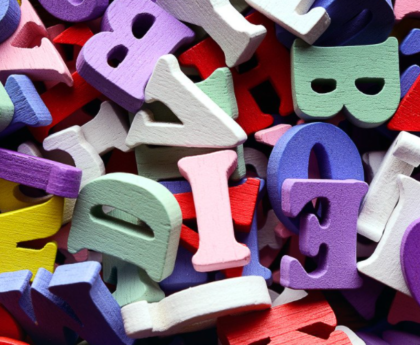Your child sounds out a word: “b-oy… boy!” Then they encounter “boil” and pause. “Is that b-oy-l?” They’re puzzled because these letter combinations look similar but behave differently. You want to help, but diphthongs can feel confusing even to adults.
Here’s the good news: Diphthongs follow predictable patterns. Once your child understands how they work, a whole category of words suddenly makes sense. Let’s break down these gliding vowel sounds together.
What Are Diphthongs, Anyway?
A diphthong is two vowel sounds that blend together in one syllable. Your mouth starts in one position and glides to another position within the same sound.
Try saying “boy” slowly. Notice how your mouth shape changes during that vowel sound? You start with an “aw” position and glide toward an “ee” position. That glide is what makes it a diphthong.
Compare that to a simple vowel sound like the “a” in “cat.” Your mouth stays in one position for that entire sound. No gliding happens.
English has several diphthongs, but four of the most common involve the spellings we’re focusing on today: oi, oy, ou, and ow. These letter combinations create two distinct sounds that appear in countless everyday words.
Understanding diphthongs helps your child decode words more accurately. Instead of trying to pronounce each vowel separately, they learn to recognize these combinations as single sounds.
The ‘oi’ and ‘oy’ Sounds
These two spellings make the same sound. Say “coin” and “boy” out loud. Hear that identical vowel sound? Your child needs to know when to use which spelling.
The pattern is wonderfully reliable. Use ‘oi’ in the middle of words. Use ‘oy’ at the end of words or before a suffix.
Common ‘oi’ words: coin, boil, soil, coil, foil, join, point, moist, broil, spoil, toil, void, choice, voice, noise, poise
Common ‘oy’ words: boy, toy, joy, soy, ploy, ahoy, enjoy, annoy, employ, destroy, decoy, convoy
Notice the pattern? Words like “point” and “soil” keep the action in the middle, so they use ‘oi.’ Words like “joy” and “toy” end with that sound, so they use ‘oy.’
When you add suffixes, ‘oy’ stays consistent. “Enjoy” becomes “enjoying” and “enjoyment.” The ‘oy’ spelling remains because it still comes before an ending.
The ‘ou’ and ‘ow’ Sounds
Here’s where things get a bit trickier. These two spellings can each make two different sounds. Don’t worry—patterns still exist.
The ‘ou’ and ‘ow’ combinations most commonly make the sound you hear in “out” and “cow.” This is the diphthong sound where your mouth starts open and rounds into an “oo” shape.
Common ‘ou’ words with the “ow” sound: house, mouse, loud, cloud, found, round, ground, shout, south, couch, pouch, trout, sprout
Common ‘ow’ words with the “ow” sound: cow, how, now, wow, brow, plow, town, down, brown, crown, clown, flower, tower, power, shower
The pattern here is less rigid than with ‘oi’ and ‘oy.’ Both spellings appear in the middle and at the end of words. Your child will need more practice and exposure to internalize which words use which spelling.
However, one helpful hint exists. The ‘ow’ spelling appears at the end of words more frequently. Think “cow,” “now,” “how.” The ‘ou’ spelling appears in the middle more often, especially before certain consonants like “nd,” “nt,” and “th.”
The Confusing Part About ‘ow’
Remember how we said ‘ow’ can make two sounds? This is the tricky part that confuses many children.
Sometimes ‘ow’ makes the sound in “cow.” Sometimes it makes the long O sound in “snow.”
Words where ‘ow’ sounds like “cow”: how, now, cow, brown, down, flower, power, tower
Words where ‘ow’ sounds like long O: snow, blow, grow, show, flow, glow, throw, window, yellow, pillow, rainbow, elbow
There’s no perfect rule for knowing which sound ‘ow’ makes in every word. Your child will need to try both sounds when decoding and see which makes a real word. This is called flexible decoding.
When your child encounters “bow,” they might try the “ow” sound first. “Bow” like taking a bow on stage. But if the sentence is about a “bow and arrow,” they need the long O sound. Context helps determine pronunciation.
This ambiguity isn’t a flaw in your child’s reading. It’s a reality of English spelling. Good readers develop flexibility. They try different pronunciations until they find one that makes sense.
Teach Strategies That Work
Start by introducing one spelling pair at a time. Spend several days on ‘oi’ and ‘oy’ before moving to ‘ou’ and ‘ow.’ Don’t rush. Building strong foundations matters more than covering material quickly.
Make the mouth movements obvious. Exaggerate the vowel sounds yourself. Have your child watch your mouth as you say “coin” or “house.” Let them feel their own mouth glide through these sounds.
Use word sorts as a hands-on activity. Write words on cards and have your child group them by spelling pattern. Put all the ‘oi’ words in one pile, and all the ‘oy’ words in another. This visual organization reinforces the patterns.
Create silly sentences packed with target words. “The noisy boys enjoy their toys.” “The brown cow found a flower in town.” These memorable sentences make learning fun while providing multiple examples.
Read decodable books that feature these patterns. When your child encounters diphthongs in real reading contexts, the patterns stick better. Point out the target sounds as you read together.
Practice writing the words, not just reading them. Encoding (spelling) reinforces decoding (reading). Dictate sentences with several diphthong words. “The coin is in the soil.” “The loud mouse ran around the house.”
When Your Child Gets Stuck
If your child consistently struggles with diphthongs, break down your approach even further.
First, make sure they can hear the difference between sounds. Say “toy” and “tie.” Can they hear that these vowel sounds differ? Some children need explicit practice with auditory discrimination before they can connect sounds to spellings.
Second, check whether they’re trying to sound out each letter individually. If your child says “t-o-y” as three separate sounds, they haven’t grasped that ‘oy’ functions as one unit. Teach them to recognize these letter combinations as single sounds.
Use color coding to highlight diphthongs in words. Write ‘oy’ in red within the word “boy.” This visual cue helps children see these letters as a team that works together.
Some children benefit from hand motions. Create a specific gesture for each diphthong sound. When they see ‘oi,’ they make the corresponding motion while saying the sound. This multisensory approach builds stronger memory connections.
Be patient with the ‘ow’ confusion. Even strong readers occasionally pause to determine which sound fits. Model your own thinking process. “Hmm, does this say ‘cow’ or ‘crow’? Let me try both and see which makes sense.”
Real Reading Practice
Diphthongs appear everywhere in English text. Once your child starts noticing them, they’ll spot these patterns constantly.
Point them out during everyday reading. “Look, there’s an ‘oy’ word in your book.” “Can you find the ‘ou’ words on this page?” This active engagement transforms passive reading into pattern recognition practice.
Let your child keep a diphthong journal. When they encounter these words in their reading, they can add them to their collection. Organizing words by pattern reinforces learning while building spelling knowledge.
Play word-building games. Give your child letter tiles or magnetic letters. Challenge them to make as many ‘oi’ words as possible. Then switch to ‘oy’ words. This active manipulation of letters deepens understanding.
Remember that mastery takes time. Your child won’t memorize every diphthong word immediately. They’re building a mental framework for understanding how these sounds work in English. That framework will serve them for life.
Build Strong Phonics Foundations
Diphthongs represent one piece of the larger phonics puzzle. As your child masters these sounds, they’re developing crucial decoding skills. They’re learning that letter combinations create sounds. They’re understanding that English spelling has patterns worth learning.
Every new pattern your child masters expands their reading ability. Words that once seemed impossible become readable. Confidence grows. Reading becomes more fluid and enjoyable.
Your role as a supportive guide makes all the difference. When you help your child notice patterns, practice new sounds, and work through confusion with patience, you’re building more than reading skills. You’re building a capable learner who knows how to tackle challenges.
Master Phonics Patterns with Reading.com
Teaching diphthongs doesn’t have to feel overwhelming. With the right approach, your child can master these sounds and unlock hundreds of new words. Reading.com provides systematic instruction that introduces words at the perfect developmental moment, with plenty of practice and reinforcement built in. Our science-based program teaches children to recognize and decode these patterns confidently, building strong reading skills that last a lifetime. Start your 7-day free trial and give your child the phonics foundation they deserve.





